Elective nodal irradiation mitigates local and systemic immunity generated by combination radiation and immunotherapy in head and neck tumors
- PMID: 36385142
- PMCID: PMC9668826
- DOI: 10.1038/s41467-022-34676-w
Elective nodal irradiation mitigates local and systemic immunity generated by combination radiation and immunotherapy in head and neck tumors
Erratum in
-
Author Correction: Elective nodal irradiation mitigates local and systemic immunity generated by combination radiation and immunotherapy in head and neck tumors.Nat Commun. 2024 Oct 10;15(1):8781. doi: 10.1038/s41467-024-52861-x. Nat Commun. 2024. PMID: 39389942 Free PMC article. No abstract available.
Abstract
In the setting of conventional radiation therapy, even when combined with immunotherapy, head and neck cancer often recurs locally and regionally. Elective nodal irradiation (ENI) is commonly employed to decrease regional recurrence. Given our developing understanding that immune cells are radio-sensitive, and that T cell priming occurs in the draining lymph nodes (DLNs), we hypothesize that radiation therapy directed at the primary tumor only will increase the effectiveness of immunotherapies. We find that ENI increases local, distant, and metastatic tumor growth. Multi-compartmental analysis of the primary/distant tumor, the DLNs, and the blood shows that ENI decreases the immune response systemically. Additionally, we find that ENI decreases antigen-specific T cells and epitope spreading. Treating the primary tumor with radiation and immunotherapy, however, fails to reduce regional recurrence, but this is reversed by either concurrent sentinel lymph node resection or irradiation. Our data support using lymphatic sparing radiation therapy for head and neck cancer.
© 2022. The Author(s).
Conflict of interest statement
Dr. Karam receives clinical funding from Genentech and Ionis that does not relate to this work. She receives clinical trial funding from AstraZeneca, a part of which is included in this manuscript. She also receives preclinical research funding from Roche for work related to the anti-CD25 antibody, which is utilized as immunotherapy in this manuscript. The remaining authors declare no competing interests.
Figures

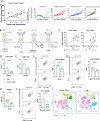
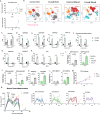
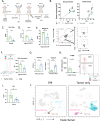
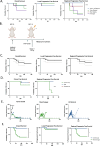
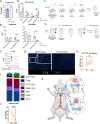
Similar articles
-
Mapping of sentinel lymph node drainage using SPECT/CT to tailor elective nodal irradiation in head and neck cancer patients (SUSPECT-2): a single-center prospective trial.BMC Cancer. 2019 Nov 14;19(1):1110. doi: 10.1186/s12885-019-6331-8. BMC Cancer. 2019. PMID: 31727019 Free PMC article. Clinical Trial.
-
SPECT/CT-guided lymph drainage mapping for the planning of unilateral elective nodal irradiation in head and neck squamous cell carcinoma.Eur Arch Otorhinolaryngol. 2018 Aug;275(8):2135-2144. doi: 10.1007/s00405-018-5050-0. Epub 2018 Jun 28. Eur Arch Otorhinolaryngol. 2018. PMID: 29955968
-
SPECT/CT-guided elective nodal irradiation for head and neck cancer: Estimation of clinical benefits using NTCP models.Radiother Oncol. 2019 Jan;130:18-24. doi: 10.1016/j.radonc.2018.07.023. Epub 2018 Aug 4. Radiother Oncol. 2019. PMID: 30087057
-
Elective unilateral nodal irradiation in head and neck squamous cell carcinoma: A paradigm shift.Eur J Cancer. 2017 Sep;82:1-5. doi: 10.1016/j.ejca.2017.05.035. Epub 2017 Jun 19. Eur J Cancer. 2017. PMID: 28633075 Review.
-
Adjuvant therapy of malignant melanoma and the role of sentinel node mapping.Recent Results Cancer Res. 2000;157:178-89. doi: 10.1007/978-3-642-57151-0_15. Recent Results Cancer Res. 2000. PMID: 10857171 Review.
Cited by
-
Ovarian Cancer Radiosensitivity: What Have We Understood So Far?Life (Basel). 2022 Dec 20;13(1):6. doi: 10.3390/life13010006. Life (Basel). 2022. PMID: 36675955 Free PMC article. Review.
-
Updates on radiotherapy-immunotherapy combinations: Proceedings of 6th annual ImmunoRad conference.Oncoimmunology. 2023 Jun 21;12(1):2222560. doi: 10.1080/2162402X.2023.2222560. eCollection 2023. Oncoimmunology. 2023. PMID: 37363104 Free PMC article. Review.
-
Association of oropharyngeal cancer recurrence with tumor-intrinsic and immune-mediated sequelae of reduced genomic instability.bioRxiv [Preprint]. 2024 Nov 4:2024.10.31.621311. doi: 10.1101/2024.10.31.621311. bioRxiv. 2024. PMID: 39574723 Free PMC article. Preprint.
-
Immunological effects of radiopharmaceutical therapy.Front Nucl Med. 2024 Apr 4;4:1331364. doi: 10.3389/fnume.2024.1331364. eCollection 2024. Front Nucl Med. 2024. PMID: 39355211 Free PMC article. Review.
-
Impact of radiation on host immune system in patients treated with chemoradiotherapy and durvalumab consolidation for unresectable locally advanced non-small cell lung cancer.Front Oncol. 2023 Jun 16;13:1186479. doi: 10.3389/fonc.2023.1186479. eCollection 2023. Front Oncol. 2023. PMID: 37397359 Free PMC article.
References
-
- Lee, N. Y. et al. Avelumab plus standard-of-care chemoradiotherapy versus chemoradiotherapy alone in patients with locally advanced squamous cell carcinoma of the head and neck: a randomised, double-blind, placebo-controlled, multicentre, phase 3 trial. Lancet Oncol.22, 450–462 (2021). - PubMed
Publication types
MeSH terms
Grants and funding
LinkOut - more resources
Full Text Sources
Other Literature Sources
Medical
Molecular Biology Databases
Research Materials

